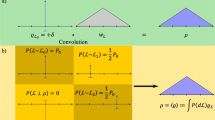Abstract
Dislocation filtering, or the removal of threading dislocations using a superlattice structure, has much potential for fabrication of high-quality semiconductor heterostructures for which buffer layers or low-quality substrate material must be used. An accurate and predictive model for the filtering phenomenon, however, has not yet been identified, leading to erratic results when attempts to design dislocation filters are made. Filtering has traditionally been treated in terms of various quasi-equilibrium models, which are often found to be lacking when applied to real systems. These mechanisms are examined with a view toward understanding their limitations in the real world. A fundamentally new mechanism for dislocation filtering, based on metastable freezing of non-equilibrium configurations encountered during crystal growth, is proposed. This non-equilibrium mechanism overcomes many of the limitations presented by the conventional filtering models.
Similar content being viewed by others
References
J. W. Matthews, S. Mader and T. B. Light, J. Appl. Phys.41, 3800 (1970).
J. W. Matthews and A. E. Blakeslee, J. Cryst. Growth27,118 (1974).
R. Hull, J. C. Bean, D. J. Werder and R. E. Leibenguth, Appl. Phys. Lett.52, 1605 (1988).
R. Hull, J. C. Bean, R. E. Leibenguth and D. J. Werder, J. Appl. Phys.65, 4723 (1989).
S. M. Bedair, T. P. Humphreys, N. A. El-Masry, Y. Lo, N. Hamaguchi, C. D. Lamp, A. A. Tuttle, D. L. Dreifus and P. Russell, Appl. Phys. Lett.49, 942 (1986).
M. A. Tischler, T. Katsuyama, N. A. El-Masry and S. M. Be-dair, Appl. Phys. Lett.46, 294 (1985).
P. A. Gourley, T. J. Drummond and B. L. Doyle, Appl. Phys. Lett.49, 1101 (1986).
M. Shinohara, Appl. Phys. Lett.52, 543 (1988).
Author information
Authors and Affiliations
Additional information
An erratum to this article is available at http://dx.doi.org/10.1007/BF02673351.
Rights and permissions
About this article
Cite this article
Dodson, B.W. Dislocation filtering: why it works, when it doesn’t. J. Electron. Mater. 19, 503–508 (1990). https://doi.org/10.1007/BF02651270
Received:
Issue Date:
DOI: https://doi.org/10.1007/BF02651270




